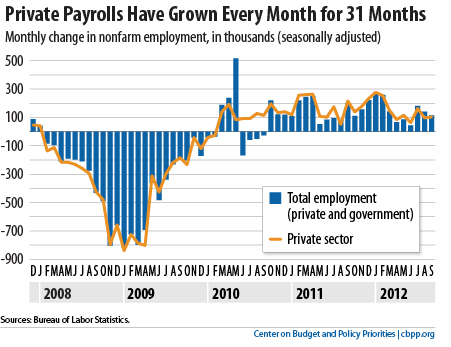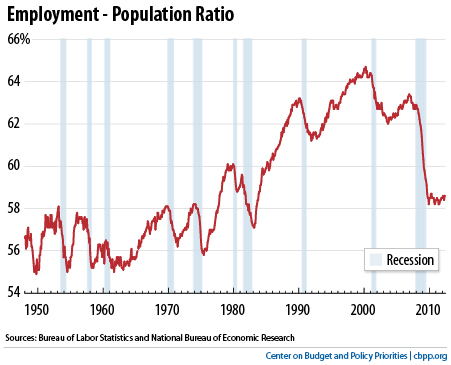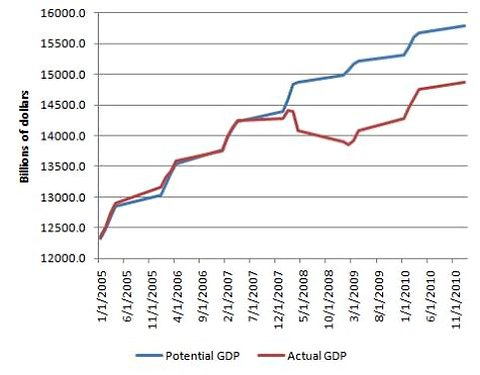|
APRIL 2012 UNEMPLOYMENT DATA*
(U.S.
BUREAU OF LABOR STATISTICS)
OFFICIAL
UNEMPLOYMENT: 8.1%
A year earlier, the number of unemployed
persons was 13.8
million, and the jobless rate was 9.0 percent. [BLS]
| White |
7.4% |
| African
American |
13.0% |
| Hispanic |
10.3% |
| Asian** |
5.2% |
| Persons with a disability** |
12.5% |
| Men
20 years and over |
7.5% |
| Women
20 years and over |
7.4% |
| Teens
(16-19 years) |
24.9% |
| Black
teens |
38.2% |
| Officially
unemployed |
12.5 million |
HIDDEN UNEMPLOYMENT
| Working
part-time because can't find a full-time job: |
7.9 million |
| People
who want jobs but are
not looking so are
not counted in official statistics (of which about 2.4 million**
searched for work during the prior 12 months and were available
for work during the reference week.) |
6.4 million |
|
Total: 26.8 million (16.7% of the labor force)
|
Source: http://www.bls.gov/news.release/pdf/empsit.pdf
**Not
seasonally adjusted.
*See Uncommon Sense #4 for an explanation of the unemployment measures.
In addition,
millions more were working full-time, year-round, yet
earned less than the official poverty level for a family of four.
In
2010, the latest year available, that number was 16.8 million,
17.0 percent of full-time, full-year workers (estimated from Current
Population Survey, Bur. of the Census, 9/2011).
In
February, 2012, the latest month available, the number of
job openings was 3.5 million, "little changed from January. Although the number of job openings remained below the 4.3 million openings when the recession began in December 2007, the number of job openings has increased 46 percent since the end of the recession in June 2009." Job
Openings and Labor Turnover Estimates, April 10, 2012.+
Thus there are now more than 7 job-wanters for each available job.

http://www.cbpp.org/cms/index.cfm?fa=view&id=3252
Employment-population
ratio 1/1948 to 3/2012

The
Waste [of output] by Paul Krugman August 11, 2011blog
cumulative loss because of recession: $2.8 Tr.
 .... ....
+ "The number of job openings in February (not seasonally adjusted) increased over the year for total nonfarm, total private, and government. Retail trade, health care and social assistance, and state and local government had increases in the number of job openings over the year. The Midwest and South regions also experienced an increase in the number of job openings over the year."
|

